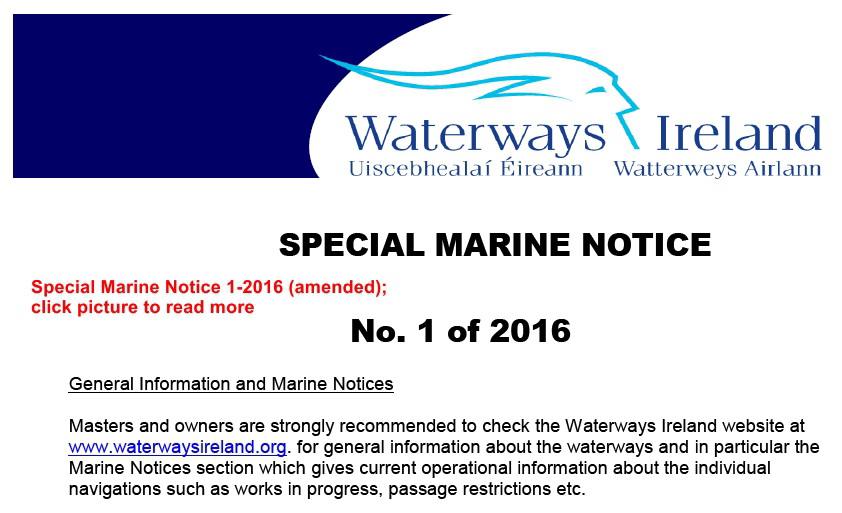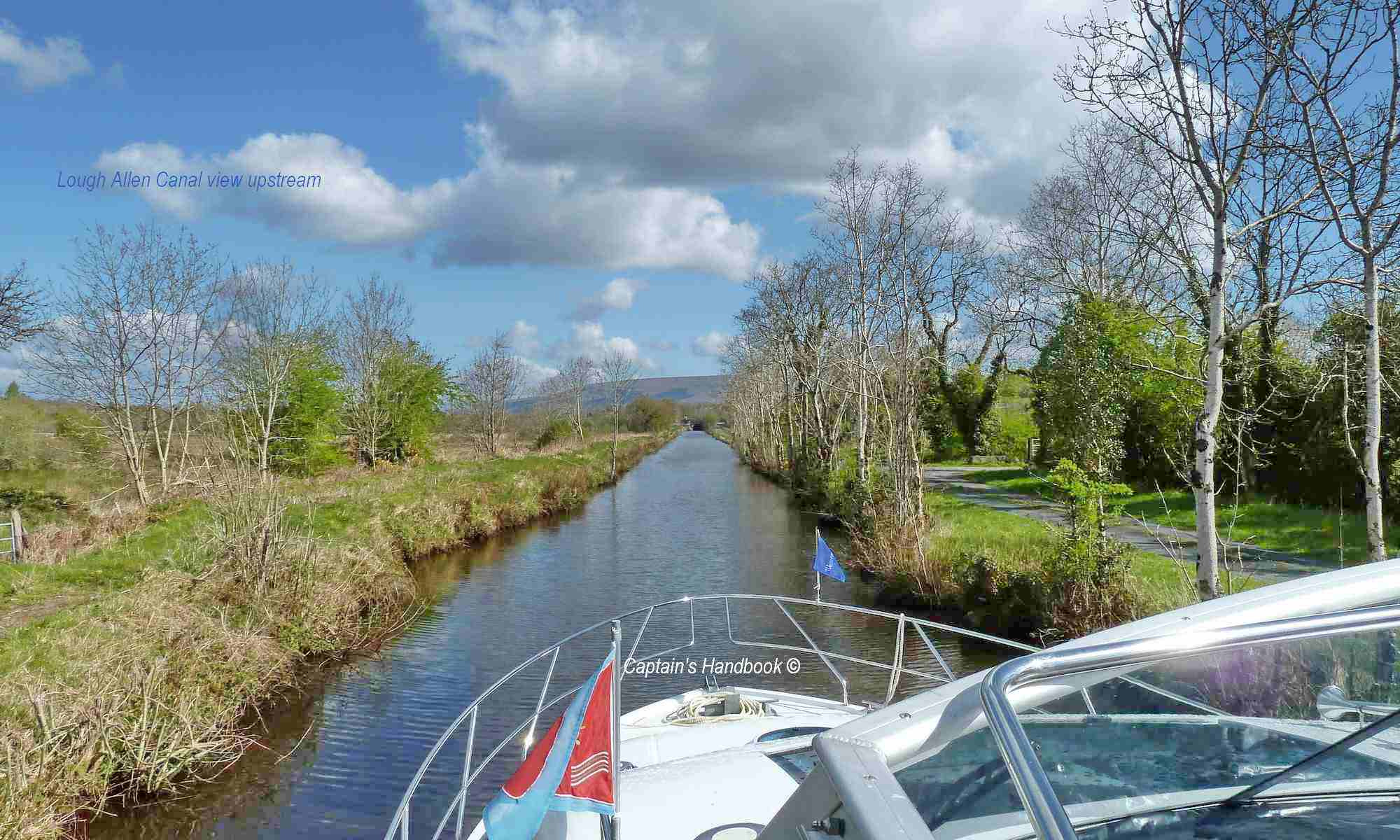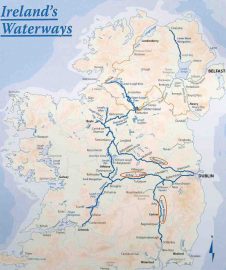General Information and Marine Notices


Waterways Ireland from the personal perspective of a boating enthusiast, Open post for questions and comments
General Information and Marine Notices


SPECIAL MARINE NOTICE
No. 1 of 2015
General Information and Marine Notices
Masters and owners are strongly recommended to check the Waterways Ireland website at www.waterwaysireland.org for general information about the waterways and in particular the Marine Notices section which gives current operational information about the individual navigations such as works in progress, passage restrictions etc.
Safety on the Water.
All users of the navigations are strongly recommended to make themselves aware of safety on the water for whatever activity they are involved in and to read the advice offered by the various governing sports bodies and by:
Registration of Vessels
All vessels using the Shannon Navigation, which includes the Shannon-Erne Waterways and the Erne System, must be registered. Only open undecked boats with an engine of 15 horsepower or less, on the Shannon Navigation, and vessels of 10 horsepower or less, on the Erne System, are exempt. Registration is free of charge.
Permits for use of the Grand and Royal Canals and the Barrow Navigation
All vessels using the Grand and Royal Canals and the Barrow Navigation must display appropriate valid Permit(s) i.e A Combined Mooring and Passage Permit (€126) and if not intending to move every five days, an Extended Mooring Permit(€152). Permit applications may be had from lockkeepers.
Passage on the Royal and Grand Canals – Dublin Area
For boat passage through the locks east of Lock 12 into / out of Dublin on either the Royal or Grand Canals, Masters are requested to contact the Waterways Ireland Eastern Regional Office (M-F 9.30am-4.30pm) on tel: 353- (0)1- 868-0148 or email dublincanals@waterwaysireland.org prior to making passage in order to plan the necessary lock-keeping assistance arrangements.
On the Grand Canal a minimum of two days notice prior to the planned passage should be given, masters should note that with the exception of pre-arranged events, a maximum of 2 boats per day will be taken through the locks, travelling either east or west.
On the Royal Canal two weeks’ notice of bridge passage (Newcomen Lifting Bridge) is required for the pre-set lift date, and lock assistance will then also be arranged. A minimum of 2 boats is required for a bridge lift to go ahead.
Events Held on the Waterways
All organised events taking place on the waterways must have the prior approval of Waterways Ireland. This is a twelve week process and application forms must be accompanied with the appropriate insurance, signed indemnity and risk assessment. The application form may be had from the Inspectorate offices or downloaded from the Waterways Ireland website.
Time Limits on Mooring in Public Harbours
On the Shannon Navigation and the Shannon-Erne Waterway craft may berth in public harbours for five consecutive days or a total of seven days in any one month.
Winter mooring may be availed of by owners during the period 1 Nov to 31 Mar by prior arrangement and payment of a charge of €63.50 per craft otherwise the “5 / 7 Day Rule” will continue to apply.
On the Erne System no vessel may berth at a public mooring for more than 48 hours without a four hour intermission within that period, throughout the year.
Smart Cards
Waterways Ireland smart cards are used to operate certain locks, to access the service blocks and to use the pump-outs along the navigations. Electrical power is also available using smart cards at a number of public mooring locations.
Berthing in Public Harbours.
Masters are reminded of the following:
Passenger Vessel Berths
Masters of vessels should not berth on passenger vessel berths where it is indicted that an arrival is imminent. Passenger vessels plying the navigations generally only occupy the berths to embark and disembark passengers and rarely remain on the berths for extended periods or overnight.
Lock Lead-in Jetties
Lead-in jetties adjacent to the upstream and downstream gates at lock chambers are solely for the purpose of craft waiting to use the lock and should not be used for long term berthing.
Vessel Wash
Vessel wash, that is, the wave generated by the passage of the boat through the water, can sometimes be large, powerful and destructive depending on the hull shape and engine power of the vessel. This wash can be detrimental to other users of the navigation when it strikes their craft or inundates the shoreline or riverbank. Masters are requested to frequently look behind and check the effect of their wash particularly when passing moored vessels, on entering harbours and approaching jetties and to be aware of people pursuing other activities such as fishing on the riverbank.
Speed Restriction
Bank Erosion
Narrow sections of all the navigations are particularly prone to bank erosion due to the large wash generated by some craft. Masters are requested to be vigilant and to slow down to a speed sufficient to maintain steerage when they observe the wash of their craft inundating the river banks.
Unusual Waterborne Activity
Unusual waterborne vessels may be encountered from time to time, such as, hovercraft or amphibious aircraft / seaplanes. Masters of such craft are reminded to apply the normal “Rule of the Road” when they meet conventional craft on the water and to allow extra room to manoeuvre in the interest of safety.
Sailing Activity
Mariners will encounter large numbers of sailing dinghies from late June to August in the vicinity of Lough Derg, Lough Ree and Lower Lough Erne. Sailing courses are marked by yellow buoys to suit weather conditions on the day. Vessels should proceed at slow speed and with due caution and observe the rules of navigation when passing these fleets, as many of the participants are junior sailors under training.
Rowing
Mariners should expect to meet canoes and vessels under oars on any part of the navigations, either recreating, in training or in competition but more so in the vicinity of Athlone, Carrick-on-Shannon, Coleraine, Enniskillen and Limerick. Masters are reminded to proceed at slow speed and especially to reduce their wash to a minimum when passing these craft as they can be easily upset and swamped due to their very low freeboard and always be prepared to give way in any given traffic situation.
Canoeing
Canoeing is an adventure sport and participants are strongly recommended to seek the advice of the sport’s governing bodies i.e The Irish Canoe Union and the Canoe Association of Northern Ireland, before venturing onto the navigations.
Persons in charge of canoes are reminded of the inherent danger to these craft associated with operating close to weirs, sluice gates, locks and other infrastructure particularly when rivers are in flood and large volumes of water are moving through the navigations due to general flood conditions or very heavy localised precipitation e.g. turbulent and broken water, stopper waves. Shooting weirs is prohibited without prior permission of Waterways Ireland.
Portage is required at all locks, however, a heavily laden canoe may be put through a lock unmanned provided it is attended with a head and stern line.
Canoe Trail Network – „Blue Ways“
Masters of powered craft are reminded that a canoe trail network is being developed across all navigations and to expect more organised canoeing along these trails necessitating slow speed and minimum wash when encountering canoeists.
Fast Powerboats and Personal Watercraft (Jet Skis)
Masters of Fast Powerboats (speed greater than 17kts) and Personal Watercraft (e.g.Jet Skis) are reminded of the inherent dangers associated with high speed on the water and especially in the confines of small bays and narrow sections of the navigations. Keeping a proper look-out, making early alterations to course and /or reducing speed will avoid conflict with slower vessels using the navigation. Personal Watercraft are not permitted to be used on the canals.
Age Restrictions
In the Republic of Ireland you have to be at least 16 years of age to operate a PWC e.g Jetski and 12 years of age or over to operate a vessel with more than a 5 hp engine.
Prohibition on Swimming
Swimming in the navigable channel, particularly at bridges, is dangerous and is prohibited due to the risk of being run over by a vessel underway in the navigation.
Towing Waterskiers, Wakeboarders, Doughnuts etc
Masters of vessels engaged in any of these activities are reminded of the manoeuvring constraints imposed upon their vessel by the tow and of the added responsibilities that they have to the person(s) being towed. These activities should be conducted in areas which are clear of conflicting traffic. It is highly recommended that a person additional to the master be carried to act as a “look-out” to keep the tow under observation at all times.
Lifejackets and Personal Flotation Devices (PFD’s)
Lifejackets and PFD’s are the single most important items of personal protective equipment to be used on a vessel and should be worn especially when the vessel is being manoeuvred such as entering / departing a lock, anchoring, coming alongside or departing a jetty or quayside.
In the Republic of Ireland all persons on board any craft of less than 7m (23 ft) must wear a lifejacket or PFD while on board an open craft or on the deck of a decked craft that is not made fast to the shore. This requirement also applies to Personal Watercraft Craft and any vessel or object being towed e.g. waterskier, wakeboarder, doughnut, banana etc.
Danger Area
The attention of mariners is drawn to the Irish Defence Forces Firing Range situated in the vicinity of buoys No’s 2 and 3, on Lough Ree on the Shannon Navigation.
Shannon Navigation, Portumna Swing Bridge Tolls
No attempt should be made by Masters’ of vessels to pay the bridge toll while making way through the bridge opening. Payment will only be taken by the Collector from Masters when they are secured alongside the jetties north and south of the bridge.
Shannon Navigation, Abbey River and Sarsfield Lock, Limerick
The attention of all users of this stretch of the Shannon Navigation is drawn to the published notices regarding navigation. Users are advised to contact the ESB Ardnacrusha hydroelectric power station (++353(0)87-9970131) before commencing their passage to ascertain how many turbines are currently running. It is advised NOT to undertake a voyage if more than one turbine is operating, due to the increased velocity of flow in the navigation, which can be dangerous. Also, ESB Ardnacrusha advise NOT to travel if the output from the Ardnacrusha hydro –electric power station is above 20 Megawatts which can be ascertained automatically in real time by phoning ++353(0)87-6477229. This situation may also arise when flood conditions prevail. Further, passage of Sarsfield Lock should be booked on 353-87-7972998, on the day prior to travel and it should be noted also that transit is not possible two hours either side of low water.
Lower Bann Navigation
The attention of all users is drawn to the “Users Code for the Lower Bann”, in particular to that section covering “Flow in the River” outlining the dangers for users both on the banks and in the navigation, associated with high flow rates when the river is in spate. Canoeists should consult and carry a copy of the “Lower Bann Canoe Trail” guide issued by the Canoe Association of Northern Ireland. Users should also contact the Rivers Agency, who is responsible for regulating the flow rates on the river, for advisory information on the flow rates to be expected on any given day.
Rivers Agency, Coleraine. Tel: 0044 28 7034 2357 Email: Rivers.Coleraine@dardni.gov.uk
Overhead Power Lines (OHPL)
The attention of all is drawn to the dangers associated with overhead power lines in particular sailing vessels, sailing dinghy’s and workboats with cranes or large airdrafts. Vigilance is required especially in the vicinity of slipways and dinghy parks, while voyage planning is a necessity in order to identify the location of overhead lines crossing the navigations. If the vessel or its equipment comes in contact with an OHPL, do NOT attempt to move the equipment or a person if either is still in contact with, or close to, the OHPL. The conductor may still be alive or re-energise automatically. Maintain a 5 m clearance, if possible, and prevent third parties from approaching you or your vessel because of the risk of arcing. Contact the Coast Guard for assistance. Fishermen are also reminded that a minimum ground distance of 30 metres should be maintained from overhead power lines when using rod and line.
Submarine Cables and Pipes
Masters of vessels are reminded not to anchor their vessels in the vicinity of submarine cables or pipes in case they foul their anchor or damage the cables or pipes. Look to the river banks for signage indicating their presence.
Water Levels – Precautions
Low Water Levels:
When water levels fall below normal summer levels masters should be aware of:
Navigation
Slipways
Bank Erosion
Lock Share
High Water Levels:
When water levels rise above normal summer level masters should be aware of:
Navigation
Harbours and Slipways
Aids to Navigation – Shannon Navigation – Recognition
Masters should consult Waterways Ireland Marine Notices to inform themselves of the roll-out of the change over from the colour black to green for starboard hand marks. Topmarks remain the same i.e square on starboard and circular on port marks. White arrows on markers indicate the safe water side of the mark.
Caution to be Used in Reliance upon Aids to Navigation
The aids to navigation depicted on the navigation guides comprise a system of fixed and floating aids to navigation. Prudent mariners will not rely solely on any single aid to navigation, particularly a floating aid to navigation. With respect to buoys, the buoy symbol is used to indicate the approximate position of the buoy body and the ground tackle which secures it to the lake or river bed. The approximate position is used because of the practical limitations in positioning and maintaining buoys in precise geographical locations. These limitations include, but are not limited to, prevailing atmospheric and lake/river conditions, the slope of and the material making up the lake/river bed, the fact that the buoys are moored to varying lengths of chain, and the fact that the buoy body and/or ground tackle positions are not under continuous surveillance. Due to the forces of nature, the position of the buoy body can be expected to shift inside and outside the charted symbol.
Buoys and perches are also moved out of position or pulled over by those mariners who use them to moor up to instead of anchoring. To this end, mariners should always monitor their passage by relating buoy/perch positions with the published navigation guide. Further, a vessel attempting to pass close by always risks collision with a yawing buoy or with the obstruction that the buoy or beacon / perch marks.
Charles J Lawn, Inspector of Navigation, 3 Jun 2015
Athlone:
Enniskillen: